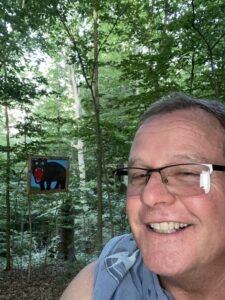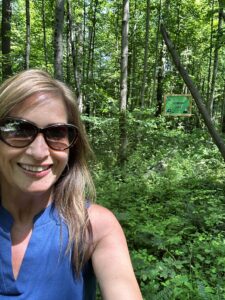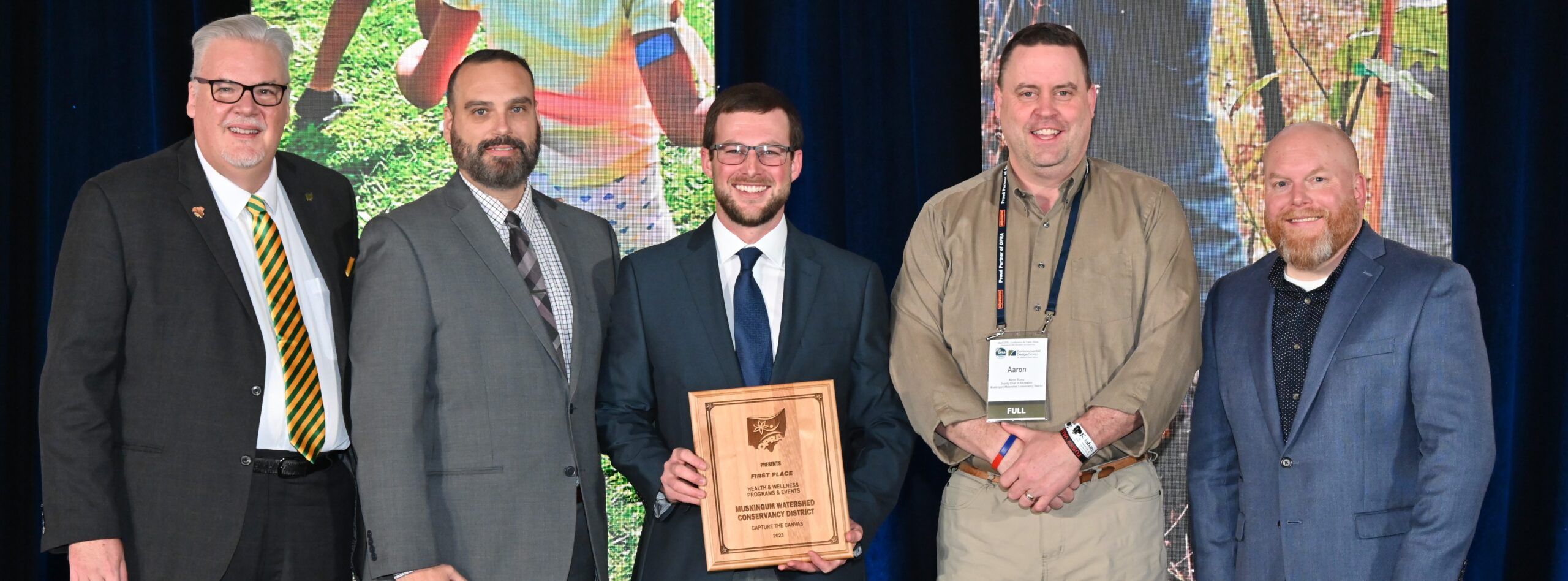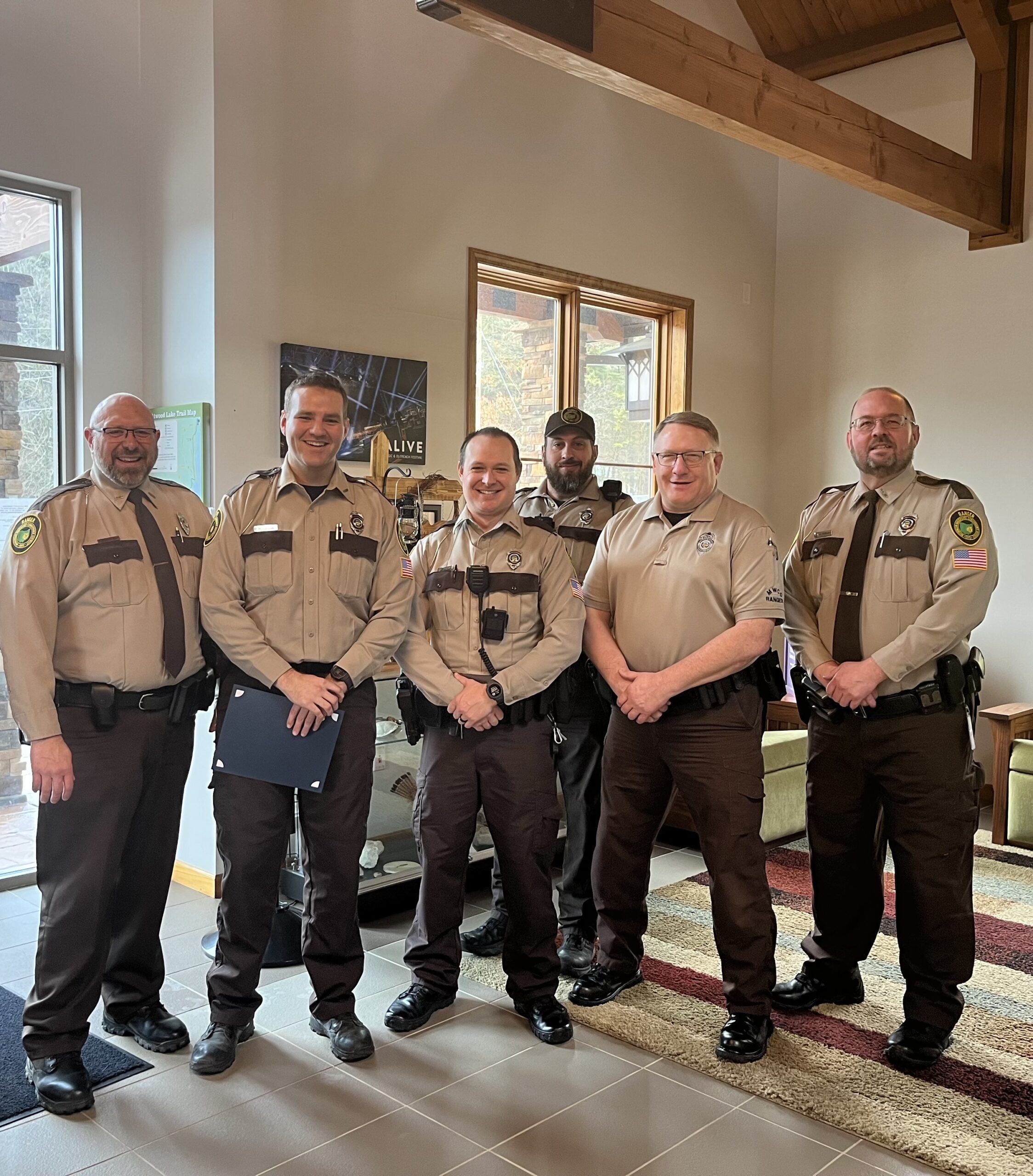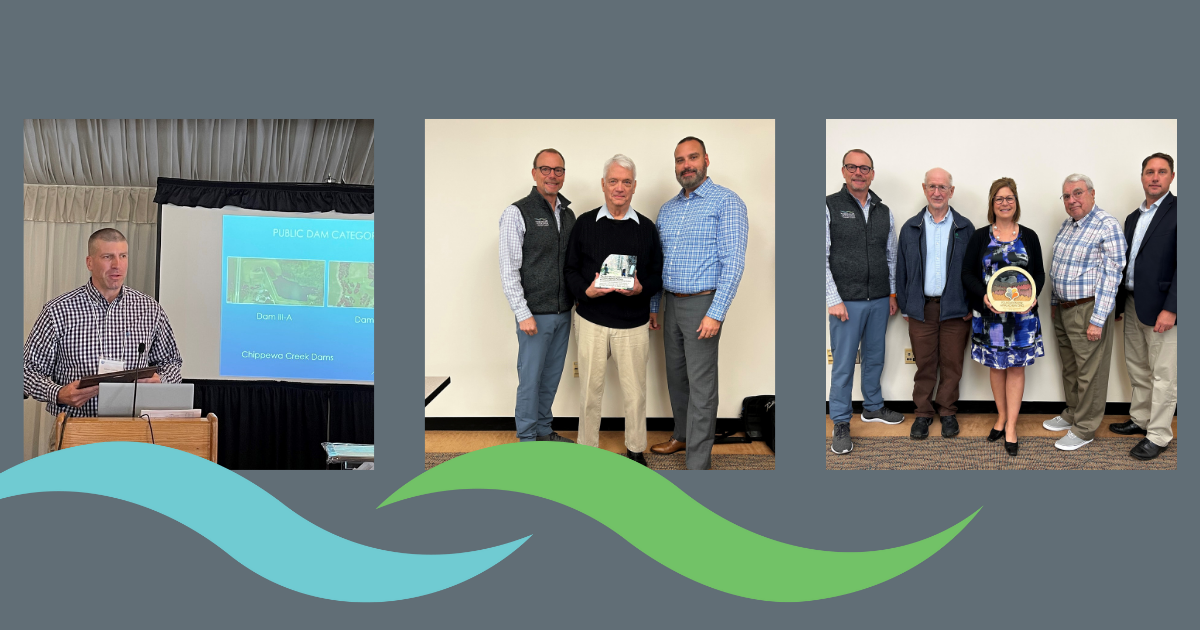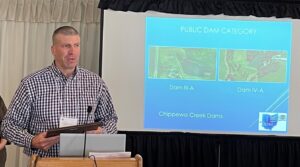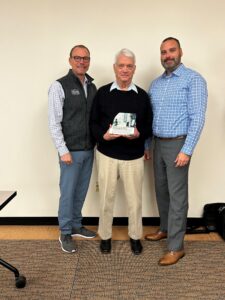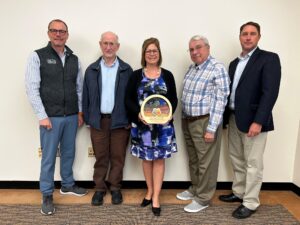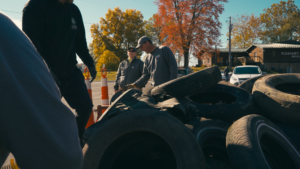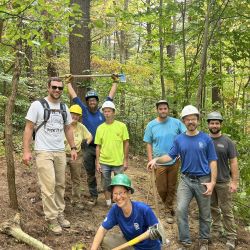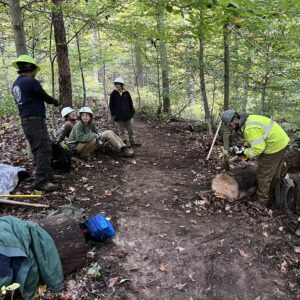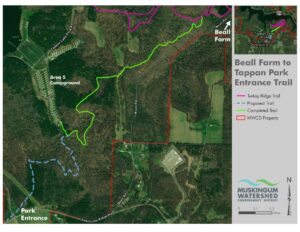MWCD Accepts First Place Award for Trails Program
Staff from the Muskingum Watershed Conservancy District (MWCD) recently attended the Ohio Park and Recreation Association (OPRA) annual conference in Sandusky, Ohio. During the conference, the OPRA Annual Awards of Excellence were presented at a banquet hosted by the association on February 6, 2024.
The MWCD was proud to accept a 1st place award in the health and wellness category for a new initiative in 2023, “Capture the Canvas”. The awards are judged by a panel of parks and recreation professionals from around Ohio. Photographed above: Woody Woodward, OPRA Executive Director, Eric Stechschulte, Dylan Sayre, Aaron Stump, and Nate Eppink, OPRA Board President
“Parks and recreation professionals throughout Ohio work every day to improve the quality of life of the people they serve,” said OPRA Executive Director Woody Woodward. “This effort is a shining example of that kind of work, and we are pleased to be able to present this award.”
Capture the Canvas was created with the intention to bring artwork to MWCD trails and increase awareness of the trail system. MWCD also sought participation from local schools to strengthen community partnerships and showcase the artwork of area students.
“I am immensely proud of our organization’s dedication to creating and maintaining a trail system throughout the Muskingum Watershed district for the betterment of residents and guests to our area,” said Craig Butler, MWCD Executive Director. “Receiving this award not only recognizes our hard work, but also underscores the profound impact our trails have on communities, recreation, and conservation.”
Once on the trail, users were encouraged to find the canvas, capture/snap a “selfie”, and upload it to the MWCD website for a chance to win one of three prizes including $1,000 cash donated by Encino Energy, a weekend stay a deluxe log cabin at Pleasant Hill Lake Park, and a full-day pontoon rental from an MWCD operated marina. Counters on the trails documented 6,702 people between Memorial Day and Labor Day. The prize winners included Robert Calhoun, Stephanie Brinkman, and Kimberly Kress.
Five high schools created original pieces for this program. The canvases were beautiful pieces of art ranging from nature, birds, bears, and outdoor fantasy.
The MWCD has committed to increase trail accessibility to all people in the coming years by not only building new trails on MWCD property, but also through a partnership with the Buckeye Trail Association. Public surveys and feedback from neighboring communities and park guests have consistently emphasized the importance of trails. The MWCD has invested over a million dollars in trail development over the last five years.
Capture the Canvas 2024 will kick-off on May 24 and conclude on Monday, September 2, 2024. Follow MWCD online at www.mwcd.org and on Facebook and Instagram for more information about how to register and prize opportunities the upcoming promotion.
